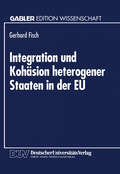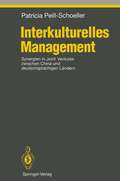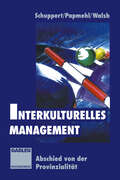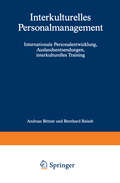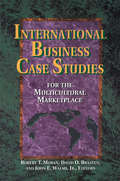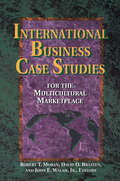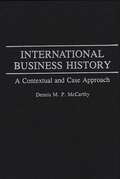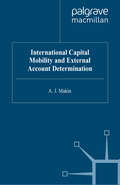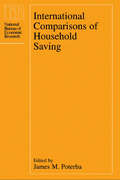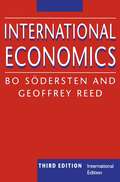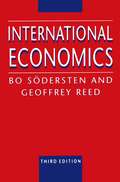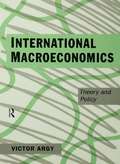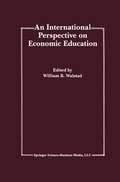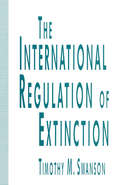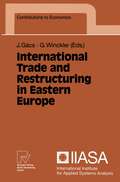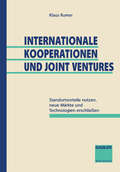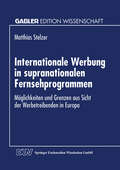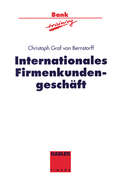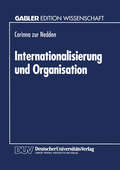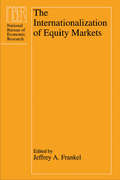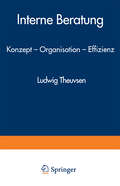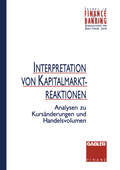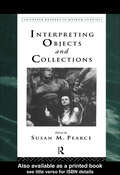- Table View
- List View
Integration und Kohäsion heterogener Staaten in der EU: Außenhandelstheoretische und entwicklungsrelevante Probleme (Gabler Edition Wissenschaft)
by Gerhard FischDer Abbau regionaler Disparitäten steht im Vordergrund der Kohäsionspolitik der EG (EU). Dabei bestehen gerade in der Heterogenität integrationspolitische Chancen. Der Autor zeigt, wie Innovation und Imitation dem Wettbewerbsverbund zugute kommen.
Interkulturelles Management: Synergien in Joint Ventures zwischen China und deutschsprachigen Ländern (Ethical Economy)
by Patricia Peill-SchoellerDieses Buch untersucht die Probleme, die sich aufgrund von nationalen und kulturellen Gegensätzen in chinesisch-deutschen Joint-Ventures in der Volksrepublik China ergeben. Ziel ist es, auf Ursachen der interkulturellen Managementprobleme in Joint-Ventures und auf die Möglichkeiten der Verbesserung aufmerksam zu machen. Das Buch richtet sich deshalb auch an Unternehmen, die in China aktiv werden wollen.
Interkulturelles Management: Abschied von der Provinzialität
by Andrè PapmehlWer wettbewerbsfähig bleiben will, muß lernen, auf dem gleichen Parkett unterschiedlicher Mentalitäten und Kulturen Fuß zu fassen. Niveauvolle und verständliche Beiträge führen den Leser in verschiedene Kulturkreise ein.
Interkulturelles Personalmanagement: Internationale Personalentwicklung, Auslandsentsendungen, interkulturelles Training
by Bernhard ReischWer international erfolgreich sein will, der muß interkulturelle Kompetenz entwickeln. Dieses Buch sensibilisiert den Leser für Stolpersteine im interkulturellen Management und bietet konkrete Unterstützung bei der Qualifizierung der Mitarbeiter für internationale Aufgaben im In- und Ausland.
International Business Case Studies For the Multicultural Marketplace
by Robert T. Moran David O. Braaten Ph.D. John Walsh, D.B.A.This comprehensive guide presents specific, real-life examples of the strategies and tactics used by some of the world's most successful international businesses and organizations to excel in the global marketplace. Divided into six major sections, this important book features more than 30 case studies that span critical issues of international business--globalization; negotiation; marketing; product/service quality; joint ventures and strategic alliances; and culturally diverse workforces. Each case study focuses on a particular company, region, or management style to clearly illustrate proven techniques for capitalizing on the cultural diversity of people, products, and markets. With contributions from more than two dozen business executives and professors, spanning the globe from Japan, to Germany, China to Mexico, this casebook provides a broad spectrum of current and future approaches to acheiving international and cross-cultural business success.
International Business Case Studies For the Multicultural Marketplace (Managing Cultural Differences Ser.)
by Robert T. Moran David O. Braaten Ph.D. John Walsh, D.B.A.This comprehensive guide presents specific, real-life examples of the strategies and tactics used by some of the world's most successful international businesses and organizations to excel in the global marketplace. Divided into six major sections, this important book features more than 30 case studies that span critical issues of international business--globalization; negotiation; marketing; product/service quality; joint ventures and strategic alliances; and culturally diverse workforces. Each case study focuses on a particular company, region, or management style to clearly illustrate proven techniques for capitalizing on the cultural diversity of people, products, and markets. With contributions from more than two dozen business executives and professors, spanning the globe from Japan, to Germany, China to Mexico, this casebook provides a broad spectrum of current and future approaches to acheiving international and cross-cultural business success.
International Business History: A Contextual and Case Approach (Non-ser.)
by Dennis MccarthyThis text presents for the first time the history of international business, using both a case and contextual approach. Case studies from around the world are analyzed in both their internal and external contexts. Divided into five geographical sections--Europe, North America, Central America/South America/the Caribbean, Africa, and Asia/the Western Pacific--the text features case studies of particular businesses of various periods, as well as essays on international business and economic integration in the particular regions. Introductions to each section define main themes and relate the case studies to those themes; commentaries introduce each case study and summarize key issues.This pioneering text is suitable for upper-division courses in international business history. It can also serve as a supplementary text in courses in international economic history, international economic relations, economic development, and comparative management
International Capital Mobility and External Account Determination
by Anthony J. MakinThis book examines the causes, consequences and policy significance of international capital movements and nations' external account imbalances. Traditional theoretical approaches to balance of payments analysis, such as the classical, elasticities, absorption, monetary and Mundell-Fleming models are critically evaluated against an extended international macroeconomic accounting framework. More meaningful capital theoretic models then link saving, investment and foreign capital movements to highlight the macroeconomic gains from international capital mobility and international trade in saving.
International Comparisons of Household Saving (National Bureau of Economic Research Project Report)
by James M. PoterbaGovernments and corporations may chip in, but around the world houshold saving is the biggest factor in national saving. To better understand why saving rates differ across countries, this volume provides the most up-to-date analyses of patterns of household saving behavior in Canada, Italy, Japan, Germany, the United Kingdom, and the United States. Each of the six chapters examines micro data sets of household saving within a particular country and summarizes statistics on patterns of saving by age, income, and other demographic factors. The authors provide age-earning profiles and analyses of the accumulation of wealth over the lifetime in a clear way that allows quick comparisons between earning, consumption, and saving in the six countries. Designed as a companion to Public Policies and Household Saving (1994), which addresses saving policies in the G-7 nations, this volume offers detailed descriptions of saving behavior in all G-7 nations except France.
International Economics
by Geoffrey Reed Bo SöderstenThis edition of the well-known and bestselling text, International Economics contains a comprehensive treatment of the theoretical and practical aspects of the subject applied to both developed and less-developed countries. This third edition incorporates new methods of analysis, recent empirical work, and developments in the international economy. New material is included on the specific factors model, the adjustment problem, intra-industry trade, trade policy and imperfect competition and the political economy of protection.
International Macroeconomics: Theory and Policy
by Victor ArgyInternational Macroeconomics: Theory and Policy offers phenomenal coverage across the entire subject of international macroeconoimics in an open economy context. The book has four objectives: * to describe the evolution of and experiences with global exchange rate regimes * to introduce the reader to a rigorous analysis of open economy models * to apply the model framework to address key policy issues * to review individual country experiences of macro policy
International Macroeconomics: Theory and Policy
by Victor ArgyInternational Macroeconomics: Theory and Policy offers phenomenal coverage across the entire subject of international macroeconoimics in an open economy context. The book has four objectives: * to describe the evolution of and experiences with global exchange rate regimes * to introduce the reader to a rigorous analysis of open economy models * to apply the model framework to address key policy issues * to review individual country experiences of macro policy
An International Perspective on Economic Education
by William B. WalstadEconomics is taught in some form in the secondary schools of nations throughout the world. The subject is rarely taught in elementary schools, and while economics courses are offered in universities, the majority of students end their formal education with secondary school. Thus, the best opportunity for the economic education of the youth of a nation occurs in secondary schools. This book examines economic education at this critical level of the educational system. The teaching of economics in secondary schools varies across countries. These differences occur because of history, the structure of education, and other national factors. At the same time, there are common elements in the economic education of many countries, especially in content coverage. This contrast between the common features and the uniqueness of economic education in secondary schools of major industrial nations exemplifies the international perspective presented in this book. The international perspective is developed in the six sections of the volume. The first section discusses why nations should include economics in school curricula, and presents a framework for teaching economics that should have global appeal. Dissension and consensus on economic issues among North American and European economists are examined in the second section. The third section surveys the U.S. research literature on precollege economic education and assesses the current state of economics instruction in U.S. schools. The economics curricula and educational practices in seven other nations -- the U.K., Canada, Japan, Germany, Austria, Korea, and Australia -- are described in the fourth and fifth sections. The fifth section also presents international comparisons of economic understanding based on national testing in six of those nations. The sixth and final section explores the role of economic education in centrally planned economies, and its effects on the transition to a market economy, using Russia, Bulgaria, and China as case studies.
The International Regulation of Extinction
by Timothy M. SwansonSwanson's book provides a good framework for understanding the extinction process in deeper socio-economic terms, and for evaluating some of the suggestions that have been made to arrest the decline. I am sure it will be of great interest to environmental economists working in this area.' - A. Markandya, Harvard Institute for International Development 'Tim Swanson's International Regulation of Extinction is the most important work on biodiversity to appear for many years. It should cause all concerned, environmentalists, economists, governments, regulators, international agencies to think again. They have misunderstood the causes of extinction, and have misdirected many of their policies as a result. Tim Swanson's work will spawn a whole new era of research. Most importantly, it can help save the world's biodiversity.' - Professor David Pearce, Director, CSERGE, University College London The book presents an economic analysis of the forces contributing to the global decline of biological diversity, and the policies available to control extinctions. The first part of the volume sets forth a revised economic theory of extinction, incorporating the terrestrial and institutional constraints on maintaining existing diversity. It analyses the existing conflicts between human development and biological diversity, entailing an application of the economic theory of learning-by-doing and global nonconvexities. The second half of the volume demonstrates the inefficiency of decentralised (multinational) regulation of biological diversity, and develops the range of approaches available in a global (international) approach to the resource. The policies analysed include transferable development rights, wildlife trade regimes, and intellectual property rights. The book concludes with a proposed agenda for the specification of the framework convention on biological diversity adopted at UNCED in Rio de Janeiro.
International Trade and Restructuring in Eastern Europe (Contributions to Economics)
by János GácsJ anos Gaes and Georg Winekler In recognition of the key position of international trade in the transition and the need for concentrated discussions of topical trade issues the International Institute for Applied Systems Analysis (IIASA) organized an international conference on "International Trade and Restructuring in Eastern Europe" which took place in Laxenburg, Austria, on 19 and 21 November 1992. The Austrian National Bank joined IIASA to co-sponsor the event. Participants of the conference were experts of international economics and trade policy from East and West, policy makers, and representatives of international organizations like the IMF, the Commission of the European Communities, the OECD, and the European Bank for Reconstruction and Development (EBRD). The papers prepared for the event and the lively discussions during the conference itself prove that the topics are intellectually challenging and timely for policy makers. It has widely been recognized that international economic relations play a crucial role in the transition of count ries of Central and Eastern Europe. The scope, speed, and success of the efforts to transform the formerly cen trally planned economies to market economies have increasingly become de pendent on the pattern these count ries have in their relation to the rest of the world. Transition comprises three major processes: macro-stabilization, mar ketization, and restructuring. The success of these three hinges to a large extent on the response of these economies to the new conditions set by international trade and exchange regimes.
Internationale Kooperationen und Joint Ventures: Standortvorteile nutzen, neue Märkte und Technologien erschließen
by Klaus RumerDie Bereitschaft von kleinen und mittleren Unternehmen, Kooperationen mit ausländi schen Partnern einzugehen, ist in der Europäischen Union sehr unterschiedlich ausge prägt. Nach einer Studie der Europäischen Kommission, basierend auf einer Umfrage aus dem Jahre 1992 unter ca. 5 000 europäischen Unternehmen, sind die Länder Däne mark und Irland am kooperationsfreudigsten. Am wenigsten bereit, mit Partnern aus dem Ausland zu kooperieren, sind die mittelständischen Unternehmen der Mitgliedstaaten Italien und Portugal. Interessanterweise ist das vereinigte Deutschland der begehrteste Kooperationspartner, während jedoch mittelständische deutsche Unternehmen nur wenig Interesse an Kooperationen mit ausländischen Partnern zeigen. Ein für deutsche Unter nehmen weiteres negatives Ergebnis ergab die Umfrage nach der Bekanntheit von Kooperationsförderungen. Am besten informiert zeigten sich hier die Unternehmen aus Dänemark, vor England und Holland, während Deutschland vor Italien den vorletzten Platz einnimmt. Größere Industrieunternehmen und Konsortien operieren bereits seit geraumer Zeit mittels Kooperationen und Gemeinschaftsunternehmen (Joint Ventures) in ausländi schen Märkten. Für kleine und mittlere Unternehmen stellt dieser Zugang jedoch eine erhebliche Barriere dar, da häufig die Erfahrung und das qualifizierte Personal fehlen, um die verbundenen Risiken richtig analysieren und bewerten zu können. Die genannten Probleme kleiner und mittlerer Unternehmen werden in der täglichen Beratungspraxis immer wieder aufs neue bestätigt. Kulturelle Unterschiede und sprach liche Schwierigkeiten zwischen den Partnern können das vielversprechendste Vorhaben schnen zu einem Debakel werden lassen. Neben der sachlichen Übereinstimmung in den Zielen müssen auch die emotionalen Beziehungen zwischen den beteiligten Partnern stimmen.
Internationale Marktbearbeitung: Erfolgreiche Strategien für Konsumgüterhersteller (neue betriebswirtschaftliche forschung (nbf) #8)
by Thomas JennerIm Rahmen der internationalen Marktbearbeitung ist neben der Frage nach der Ausgestaltung des Marketinginstrumentariums vor allem die Festlegung der Marktbearbeitungsstrategie von grundlegender Bedeutung.
Internationale Werbung in supranationalen Fernsehprogrammen: Möglichkeiten und Grenzen aus Sicht der Werbetreibenden in Europa (Gabler Edition Wissenschaft)
by Matthias StelzerDieses Buch beleuchtet die Situation auf dem europäischen Werbe- und Medienmarkt und die Stellung des internationalen Kabel- und Satellitenfernsehens. Es bietet Entscheidungsmodelle für den Einsatz dieser Medien als Werbeträger.
Internationales Firmenkundengeschäft (Banktraining)
by Christoph Graf BernstorffDer Autor gibt Ratschläge, wie man auf internationaler Ebene Kunden gewinnen und mit maßgeschneiderten Finanzkonzepten (z.B. in den Bereichen Corporate Finance, M & A, MBO, LBO) an sich binden kann.
Internationalisierung und Organisation: Konzepte für die international tätige Unternehmung mit Differenzierungsstrategie
by Corinna Zur NeddenDas Buch stellt einen organisatorischen Gestaltungsrahmen vor, mit dessen Hilfe in international tätigen Unternehmungen sowohl neue als auch bislang eingesetzte Koordinations- und Motivationskonzepte überprüft werden können.
The Internationalization of Equity Markets (National Bureau of Economic Research Project Report)
by Jeffrey A. FrankelThis timely volume addresses three important recent trends in the internationalization of United States equity markets: extensive market integration through foreign investment and links among stock prices around the world; increasing securitization as countries such as Japan come to rely more than ever before on markets in equities and bonds at the expense of banks; and the opening of national financial systems of newly industrializing countries to international financial flows and institutions, as governments remove capital controls and other barriers. Eight essays examine such issues as the current extent of international market integration, gains to U.S. investors through international diversification, home-country bias in investing, the role of time and location around the world in stock trading, and the behavior of country funds. Other, long-standing questions about equity markets are also addressed, including market efficiency and the accuracy of models of expected returns, with a particular focus on variances, covariances, and the price of risk according to the Capital Asset Pricing Model.
Interne Beratung: Konzept — Organisation — Effizienz
by Ludwig TheuvsenDieses Buch zeigt, daß die interne Beratung in vielen Fällen ein kostengünstigerer Weg ist, das für unternehmerische Entscheidungen notwendige Know-how bereitzustellen, als die Konsultation externer Unternehmensberater.
Interpretation von Kapitalmarktreaktionen: Analysen zu Kursänderungen und Handelsvolumen (Trends in Finance and Banking)
by Stefan SchmaleDie vorliegende Monographie behandelt ein kapitalmarkttheoretisches Gebiet, das in der Vergangenheit fast ausschließlich unter dem Gesichtspunkt des Zusammenhanges zwischen dem Zugang einer neuen Information und der beobachteten Preisänderung betrachtet worden ist. In neuerer Zeit wird nun versucht, nicht nur die PreiSänderung, sondern auch das Handelsvolumen in der Reaktion auf neue Informationen zu analysieren. Das theore tische Verständnis über den Zusammenhang zwischen Zugang neuer Informationen und der Entstehung von Handelsvolumen ist zur Zeit allerdings noch wenig ausgeprägt. Eine allgemein akzeptierte Theorie fehlt. Die verschiedenen theoretischen Modelle gelangen, je nachdem, wie sie die Einzelursachen miteinander kombinieren und wie sie die Leerverkaufsbeschränkung behandeln, zu wider sprüchlichen Ergebnissen; bislang ist es auch nicht gelungen, eine akzeptable Erklärung fur die empirisch beobachteten Unterschiede zwischen dem Handelsvolumen bei Preisanstiegen und bei Preisrückgängen zu finden. Eine der Ursachen dafur ist die Vielfalt der in den Modellen verwendeten Annahmen über Erwartungsbildung, Marktorganisation und Leer verkaufsmöglichkeiten. An diesem Punkt setzt die Untersuchung an. Sie analysiert in ihrem Schwerpunktteil die Wirkung heterogener Erwartungsbildung und nicht gleichzeitigen Informationszuganges auf Preisänderung, Handelsvolumen und das Verhältnis bei der zueinander.
Interpreting Objects and Collections
by Susan PearceThis volume brings together for the first time the most significant papers on the interpretation of objects and collections and examines how people relate to material culture and why they collect things. The first section of the book discusses the interpretation of objects, setting the philosophical and historical context of object interpretation. Papers are included which discuss objects variously as historical documents, functioning material, and as semiotic texts, as well as those which examine the politics of objects and the methodology of object study. The second section, on the interpretation of collections, looks at the study of collections in their historical and conceptual context. Many topics are covered such as the study of collecting to structure individual identity, its affect on time and space and the construction of gender. There are also papers discussing collection and ideology, collection and social action and the methodology of collection study. This unique anthology of articles and extracts will be of inestimable value to all students and professionals involved in the interpretation of objects and collections.
